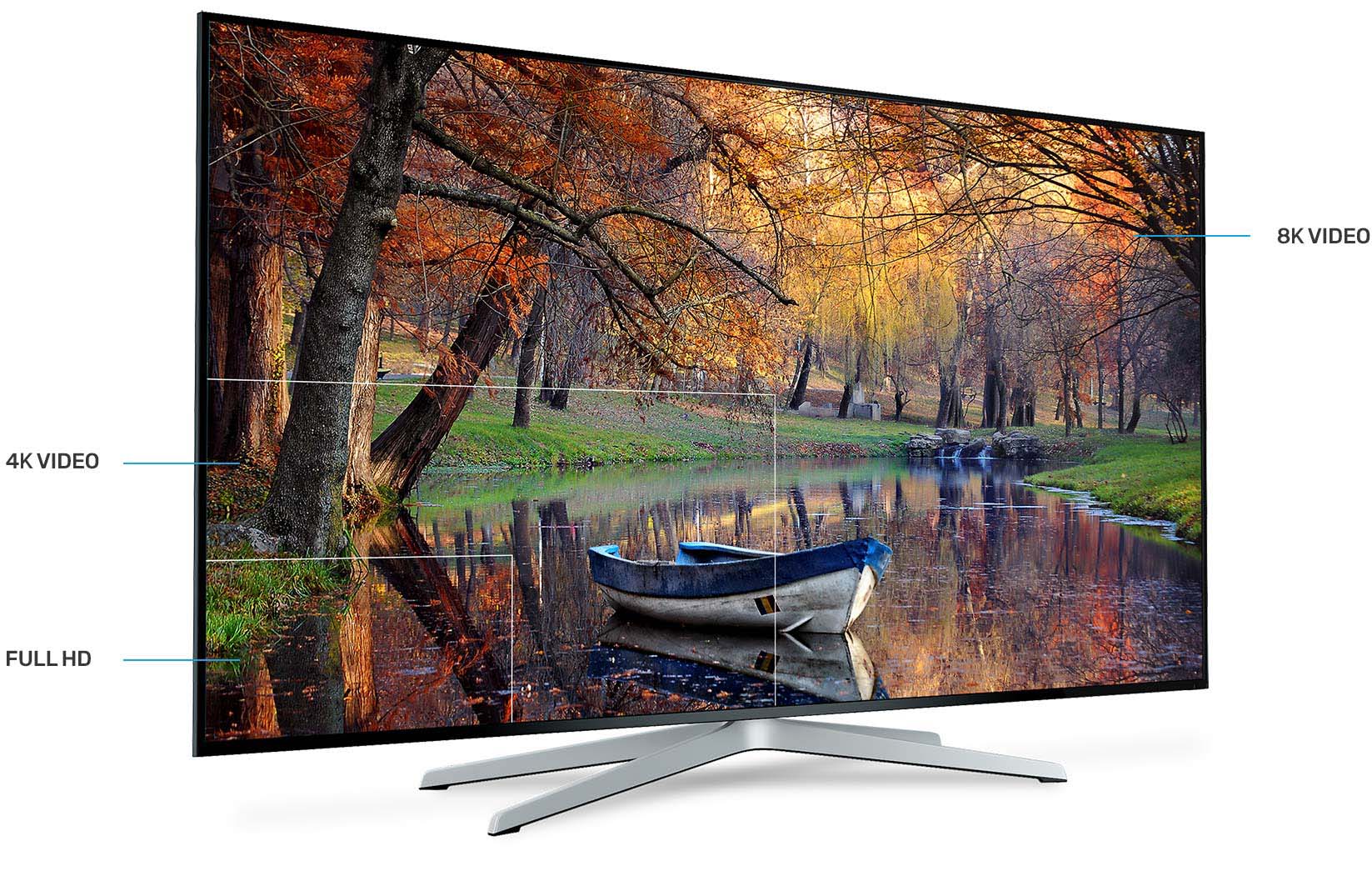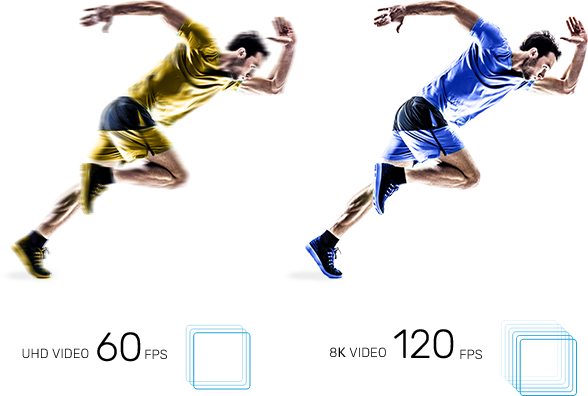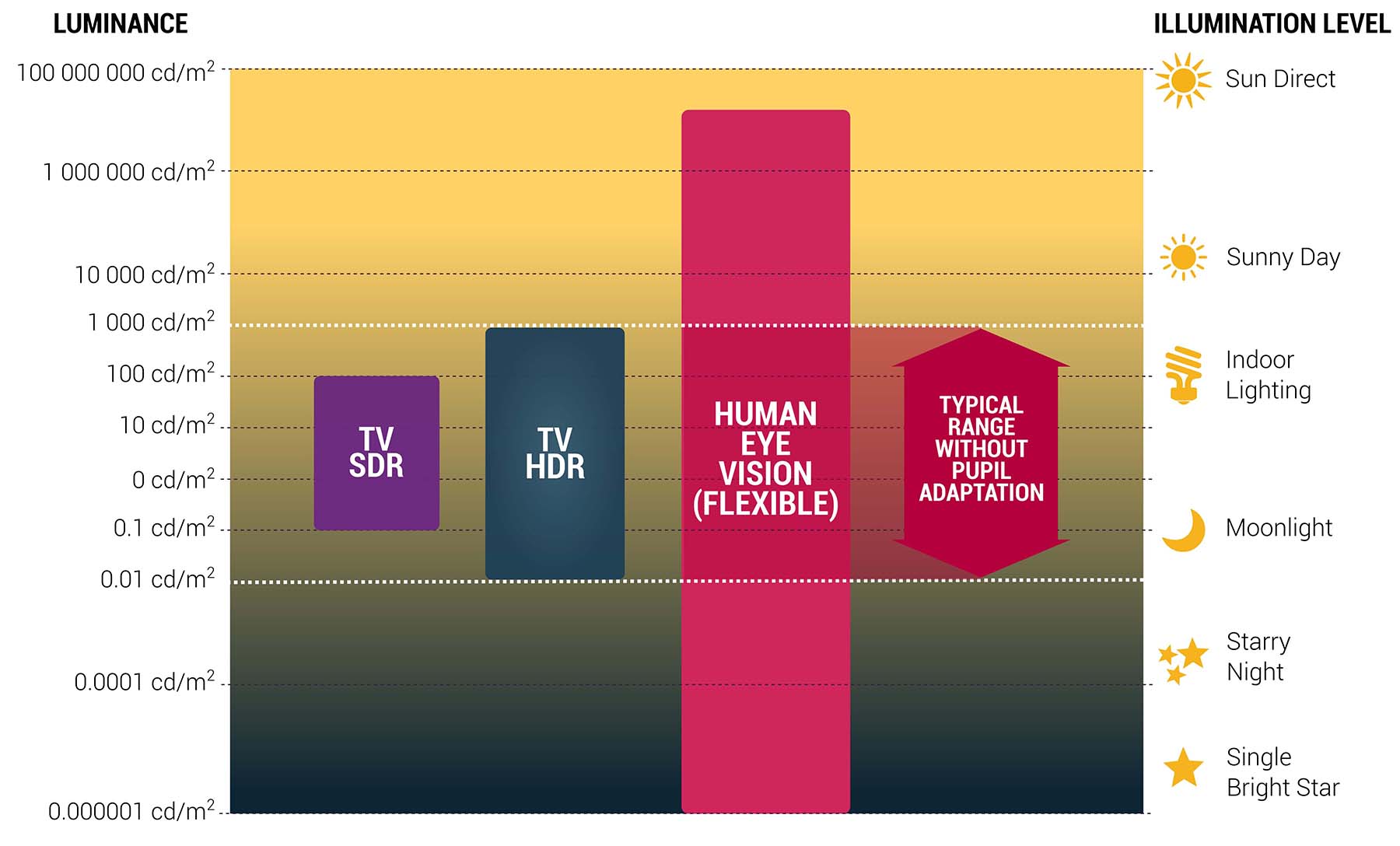Technology/
Next-Generation Video
Discover the latest advances in media technologies: 8K, HFR (120 fps), HDR, Wide Color Gamut, and VR and 360°video.
User demands for better quality combined with technology advances in displays, computing, networking, storage, and video codecs have resulted in a continuous increase in video quality over the last years.
Standard Definition (SD) video was surpassed by HD in the late 2000s. HD is used now widespread in many applications ranging from broadcasting, VoD, to Blu-ray disks. Currently, there is a transition in the media industry from HD to a new generation of video systems known as Ultra HD (UHD).
UHD video provides higher resolution (4K and 8K) than Full HD (FHD), as well as high quality video enhancements, such as High Dynamic Range (HDR), High Frame Rate (HFR), Wide Colour Gamut (WCG), and high bit depth, which together will deliver a stronger sensation of reality and a much more immersive experience.
What Next Generation Video Offers You
Ultra High Definition: 4K, 8K, and Beyond
UHD gives a more immersive experience as it allows to cover a larger Field of View (FoV), and at the same time, provide a higher pixel density which results in content with finer level of detail.
8K (UHD-2 or Super Hi Vision) with a 16 times higher resolution than FHD, and a 4 times higher resolution than 4K UHD, delivers immersive and absorbing experiences that are not possible even with 4K.
Some applications, specially the next generation of VR and 360° video, will require resolutions beyond 8K including 12K and 16K in order to cover the entire FoV with high-quality video.
8K delivers immersive and absorbing experience that are not possible even with 4K.

High Dynamic Range
Dynamic range is the ratio between the clearest and darkest area of an image (maximum and minimum luminance in candela per square meter [cd/m2]). Dynamic range is often measured in stops, where each stop corresponds to a doubling of luminance intensity.
Standard Dynamic Range (SDR) used in HD video systems has a dynamic range of 10 stops. Natural scenes can have a dynamic range up to 50 stops. The simultaneous dynamic range for the human eye, however, is around 17 stops. Current HD systems as giving much less contrast than the human eye can perceive. HDR video systems will provide at least 16 stops.
HDR allows to have more contrast details in images, providing clear images in dark and bright areas, and better representation of highlights. As a result, HDR video creates more natural images and an improved sensation of sharpness.
HDR allows to have clear images in dark and bright areas including highlights, creating improved sensation of sharpness.
Wide Color Gamut
Wide Color Gamut extends the amount of colors that can be represented in an image. The current generation of HD video systems can only represent a small fraction of all the colors than the human eye can recognize.
UHD video has been defined to use the new BT.2020 color gamut that extends well beyond the capabilities of the BT.709 standard used in current HDTV. BT.2020 will require a long time to be fully implemented by the display industry due to the very demanding requirements. The DCI-P3 color space, defined for digital cinema applications, is becoming very popular as an intermediate step between BT.709 and BT.2020.
Wide Color Gamut requires at least 10-bit video, and for proper rendering appropriate metadata should be provided.
Wide Color Gamut extends the colors that can be represented well beyond the capabilities of the current HDTV.

High Frame Rate
As the video resolution is increasing from FHD to UHD-4K and UHD-8K, the frame rate has to increase as well, in order to maintain the dynamic image definition. For video content with fast object or camera movement HFR is of a paramount importance for providing smooth motion representation, for being able to show details in areas with high motion, and to minimize motion-related artifacts.
Current video systems use frame rates up to 60 frames/s: 24, 25, 30, 48, 50 and 60. HFR refers to frame rates higher than 60 frames/s, including 100 and 120 frames/s for TV systems. Higher frame rates such as 240 frames/s have been proposed for next generation VR systems.
Although going from 60 to 120 frames/s requires doubling the uncompressed data rate, it has been shown that, when using advanced video compression, the data rate increases only 20 to 30%.
For video content with fast object or camera movement HFR is of a paramount importance for providing smooth motion representation.

VR and 360° Video
Immersive experiences, in which the user is completely involved in the media, have been intended in the past with several technologies such as HD and UHD, Cinemascope, and IMAX. The emergence of VR devices has created a new opportunity for content creators for delivering truly immersive experiences to final users.
Although the new VR content is perceived as immersive, the quality of experience needs to improve significantly to provide a convincing and potentially transformative immersive experience.
Video quality enhancements include:
- Resolution, FoV, and pixel density: According to some industry predictions, 8K is the minimum for a convincing immersive VR experience, and 16Kx16K is needed for a true VR experience. 360° VR video requires a total resolution that is three or four times the size of the FoV. A 360° picture requires a total resolution that is three or four times the size of the FoV. With FoVs between 100° to 200°, increases in device resolution result in higher pixel density and sharper images.
- Frame rate: HFR is even more important in VR than in traditional TV systems as the user can also move around the content. Frame rates up to 240 fps will be needed for true VR motion representation.
| First-gen VR 4K | Current-gen VR 8K | "True VR" 16K | |
|---|---|---|---|
| Resolution per Eye [px] | 1024 x 1024 | 2048 x 2048 | 4096 x 4096 |
| Total Resolution [px] | 4096 x 2048 | 8192 x 8192 | 16384 x 16384 |
| Frame Rate [Hz] | 30/60 | 60/120 | 240 |
| Mono/Stereo | Mono | Stereo | Stereo |
| Bit Depth | 8-bit | 10-bit | 12-bit |
| Video Codec | H.264 | HEVC | Next-gen codec |
| Audio | Stereo | Spatial | Advanced Spatial |
Although the new VR content is perceived as immersive, the quality of experience needs to improve significantly to provide a convincing and potentially transformative immersive experience.
Video Data Rates
The key challenge of next-generation video is the huge data rate that it generates. The table below summarizes the main properties of HD, UHD-4K, and UHD-8K video systems, as well as the associated data rates for both uncompressed and compressed content.
| HD | UHD-4K | UHD-8K | VR 16K | |
|---|---|---|---|---|
| Resolution [px] | 1920x1080 | 3840x2160 | 7680x4320 | 15360x15360 |
| Frame rate [frames/s] | 30 | 60 | 120 | 240 |
| Color format | 4:2:0 | 4:2:0 | 4:2:0 | 4:4:4 |
| Bit depth | 8-bit | 10-bit | 10-bit | 12-bit |
| Uncompressed bitrate [Mbps] | 747 | 7,500 | 60,000 | 849,400 |
| HEVC Compressed bitrate [Mbps] | 5 | 25 | 120 | 900 |
| Compression ratio | 150X | 300X | 600X | 900X |
Data storage, transmission, and reproduction of uncompressed UHD video is very complex and expensive. In order to achieve practical data rates, as the one suggested in the table above, a compression ratio of more than 500X is needed. The video codec not only has to provide very high compression efficiency but, at the same time, maintain very high quality, as compression artifacts are more noticeable in UHD environments.
Data storage, transmission, and reproduction of uncompressed UHD video is very complex and expensive.
Currently, one of the most popular video codecs for video distribution is H.264/AVC. In 2013 a new international standard for video coding called HEVC/H.265 was defined which offers 50% better compression at the same quality rate than H.264/AVC.
References: Standards and Technical Documents
- Ultra HD Forum: Ultra HD Forum. “Ultra HD Forum: Phase A Guidelines” Dec 2016
- UHD Phase 1: DVB. “Specification for the use of Video and Audio Coding in Broadcasting Applications based on the MPEG-2 Transport Stream”. DVB A157. Nov 2016”
- 8K Super Hi Vision: ARIB.“Video Coding, Audio Coding and Multiplexing Specifications for Digital Broadcasting”. STD-B32. V 3.9. Dec 2016
- PQ transfer function for HDR10: SMPTE. SMPTE ST 2084, “High Dynamic Range Electro-Optical Transfer Function of Mastering Reference Displays”
- Metadata for HDR10: SMPTE. SMPTE ST 2086, “Mastering Display Color Volume Metadata Supporting High Luminance and Wide Color Gamut Images”
- HLG Standard: ARIB: ARIB. “Essential Parameter Values for the Extended Image Dynamic Range Television System for Programme Production”. ARIB STD-B67”.
- HLG Standard: ITU. “Recommendation ITU-R BT.2100. Image parameter values for high dynamic range television for use in production and international programme exchange”, June 2017.
- WCG Parameters for UHD TV systems: ITU. “Recommendation ITU-R BT.2020-2. Parameter values for ultra-high definition television systems for production and international programme exchange”. Oct 2015.
